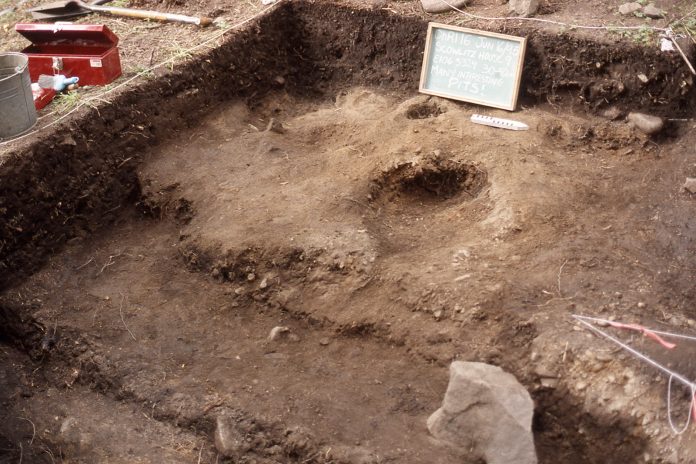The Chilliwack Museum and Archives opened a new exhibit on Thursday, November 2. The exhibit, which runs until April 28, 2018, showcases the life and history of Sq’éwlets (pronounced “scowl-its”), a Stó:lo community near Chilliwack at the confluence of the Fraser and Harrison rivers, where archeological work has been going on for the past several years.
In the 1990s, UBC began archeological digs in the area, which inspired the people of Sq’éwlets to learn more about their history. This exhibit is the result of years of cultural revival, which has included the construction of new longhouses, and revival of the Halq’emeylem language. The purpose of the exhibit is to educate both Indigenous children and non-Indigenous peoples about the history and way of life of the people who have traditionally inhabited this region.
The two-hour opening event was hosted in part by three representatives of the Stó:l? community: Chief Robert Coombs, Chief Andy Phillips, and Johnny Williams. Coombs, who spoke first, had only a few brief comments, but he expressed hope for a unified and harmonious community that will embrace all as equals. Phillips had the most to say, and he explained the purpose of the exhibit, and how it all came to be. Williams, with the help of his children, then presented a traditional welcoming dance to the attendees. Comments and introductions were also offered by Matthew Francis of the Chilliwack Museum and Archives, and Councillor Sue Attrill who was there as acting mayor.
The exhibit includes not only historical artifacts, but also modern objects, and written and video testimonials from members of the Indigenous community that shed light not only on the past, but also the present.
Phillips explained some the hardships that the Indigenous community still faces, especially regarding federal policy, such as the reversal the Ktunaxa Nation recently suffered when they lost a Supreme Court battle to prevent the Jumbo Glacier resort from being built on land sacred to them. Despite roadblocks and disappointments, Phillips remains optimistic.
“You are on the right path,” Phillips said, referring to the ongoing process by which Indigenous people have slowly but surely gained the respect and recognition from other Canadians, and noting that an exhibition like this one would have been unthinkable 40 years ago. It is but one part of a larger movement for cultural revival and indigenization that has been spreading across the Fraser Valley.
A metaphor that was used was of standing astride two canoes with one foot in each, one representing the past, and ancient traditions, and the other representing the present, and the modern world. Therefore, the new exhibit at the Chilliwack Museum presents the contents of both these vessels. It is the hope of the people of Sq’éwlets that these two canoes will not drift apart, and that both will carry them into a bright future.


